We wrap up “Guards” month for my Back to Basics of Italian Rapier class tonight. We’ve spending the entire month looking at each of the four primary guards of Italian rapier.
To end the session, we looked at the fourth guard — quarta — including how to hold the sword & body in quarta, the properties of the guard, it’s uses, and some basic plays folks can do as a solo drill.
The Basics
Quarta is the one true inside guard in the Italian system, so fencers will get well acquainted with the guard. It’s formed with the palm of the hand face up and the true-edge facing toward our inside line (off-hand side).
While most of the late-Renaissance Italian masters really have just one version of quarta, Fabris shows four variations of the guard in his first book.

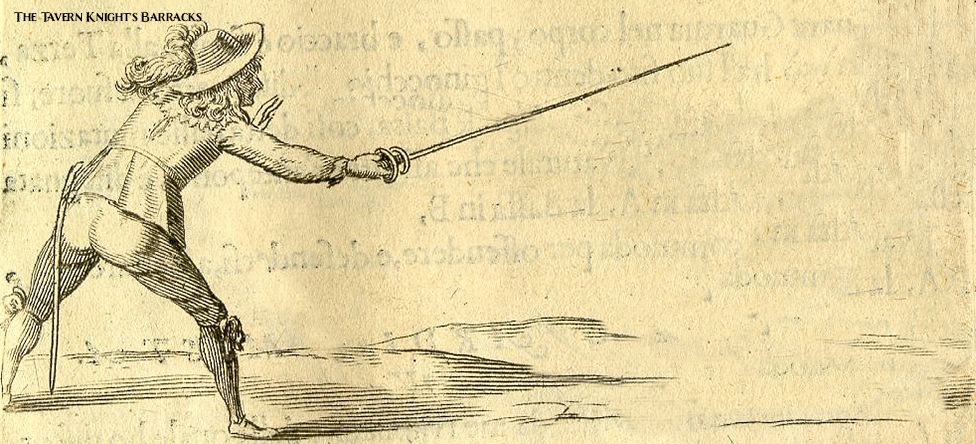
Properties
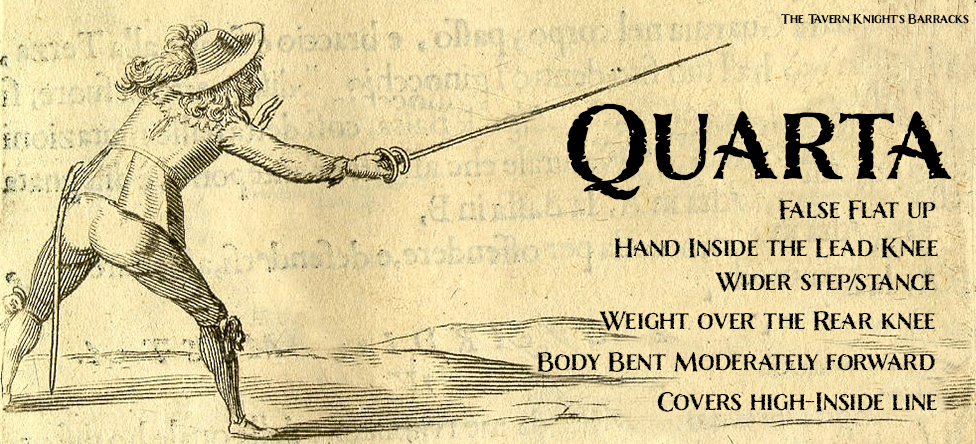
As mentioned earlier, quarta is our inside-line guard. Naturally, it will cover the high-inside line but we can dip the point to strike/cover the low-line, too.
While quarta closes off the inside line the best, it’s very good at crossing with the false edge from the outside line which can be used for finding/gaining as well as some attacks.
We also see quarta being used when performing voids like girattas.
Other properties of quarta, according to Alfieri, include easier to throw feints and disorient your opponent’s, quick to attack with the thrust or cut, and a comfortable guard to hang out in.
Alfieri also thinks quarta is the best guard to perform cavaziones in, however, I disagree with him there.
Downside of the guard is that it’s easy to form incorrectly, making it an easy guard to defeat.
How to Form Quarta
-

Guardia Quarta (profile) -

Guardia Quarta (front)
Feet/Stance. Hold your feet in a moderate to wide distance. Roughly 80% of your weight should be held over your back leg.
Arm & Hand. Your arm should be extended at shoulder height and with your hand held just inside your sword-side knee.
Body. You should hip-hinge forward, into the forward guard (or offensive posture) position.
This hinging doesn’t have to be as extreme as shown in Fabris. A slight or moderate hinge is also fine if that’s more comfortable and you can move just fine.
Also engage your back muscles with a slight retraction of your scapula (shoulder blade). This will help keep your shoulders more neutral which will:
- Shift some of the sword weight off your delts and onto your back, making holding the guard longer a little easier and,
- Lessen the chance of a shoulder injury.
Sword. Your sword should be held with the true edge facing toward your inside line (your off-hand side) and the quillons held horizontal.
Head. Your head should be tucked safely behind your hilt, closer to your leading shoulder but still to your outside line.
Off-Hand. In the defensive stance, your off-hand should be held by your face or held by your sword-elbow (a closed off-hand position).
When striking in quarta, you can throw the arm back (like in Capoferro) or chicken-wing it (like in Fabris), or you can use one of two closed-guard variations.
-

Closed-Quarta with the sword high, off-hand low (profile) -

Closed-Quarta with the sword high, off-hand low (front)
The first version is with the sword high. You’ll want to keep your off-hand below your sword to cover the low line. Your off-hand elbow should be in line with your pommel.
-

Closed-Quarta with the sword low, off-hand high (profile) -

Closed-Quarta with the sword low, off-hand high (front)
In the second version is things switch. So now the sword covers the low-line and the off-hand covers the high-line. The heel of your off-hand should be connected to the pommel of your rapier and with your palm facing to your left (if you’re a righty).
Plays
Play #1 — Bread & Butter
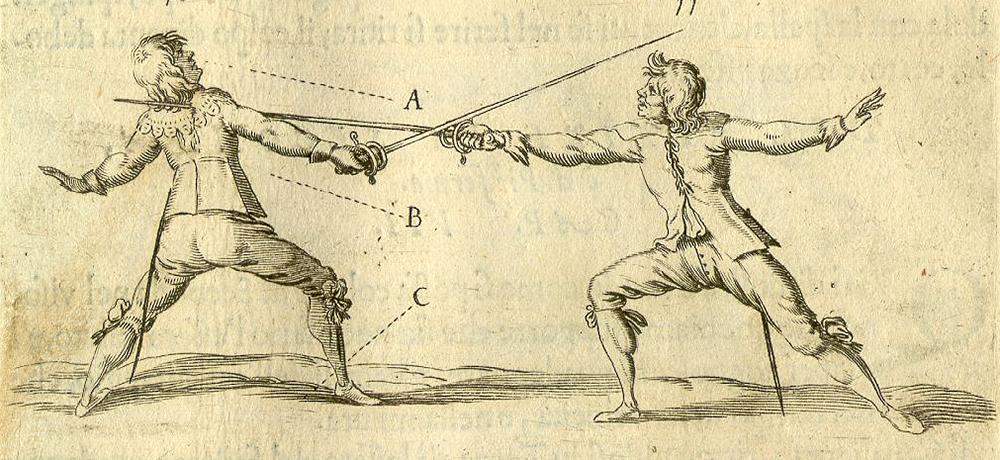
Much like one of the first few plates in late-Italian Renaissance masters’ treatise is a strike in seconda, same goes for quarta. And the setups are the same but just mirror imaged.
- Find your opponent on the outside line
- Your opponent performs a cavazione and attacks on the inside line
- Turn your hand into quarta and strike your opponent in controtempo
This works similarly if you were to feint on the outside to draw a parry and then cavazione to the inside line and strike in quarta.
Play #2 — The Void (Giratta)
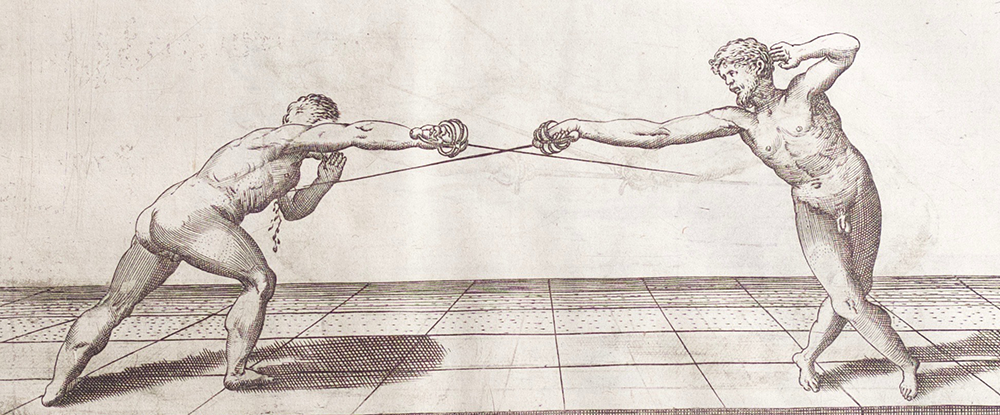
Quarta is also the primary hand position we use when performing girattas (though we can also use terza, on occasion).
- Approach your opponent on the outside line
- Create a slight opening on the outside line with an angle of your blade
- Your opponent, seeing the opening, moves to attack in seconda
- Perform a cavazione, turn your hand in quarta while passing your back foot behind your lead foot.
Play #3 — Countering a Cut
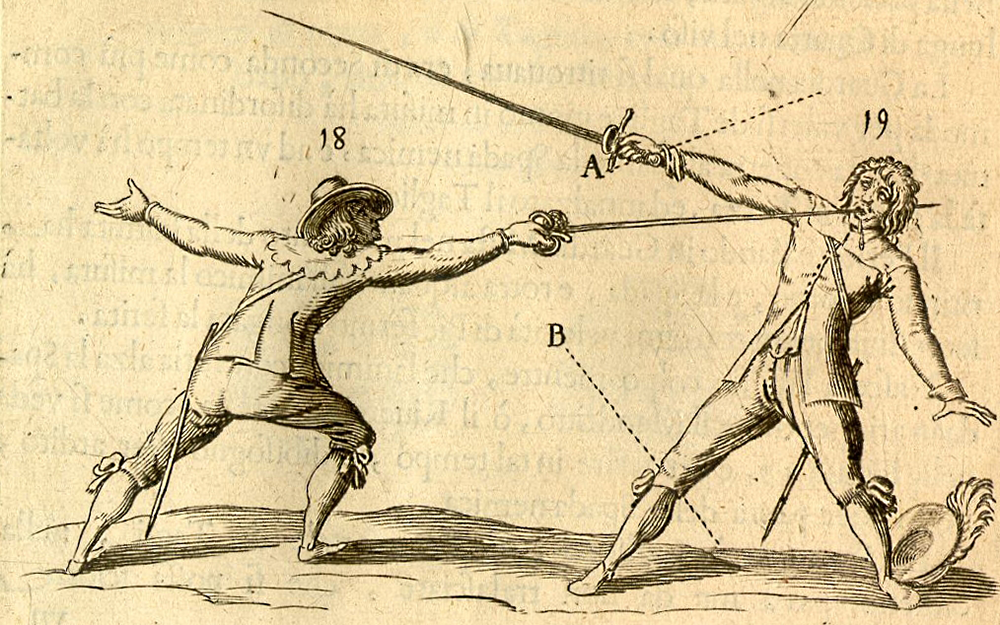
Quarta is also the favorite guard for countering cuts.
- Find your opponent on the outside line
- Your opponent turns his hand to throw a mandritto squalumbratto to your head
- Turn your hand into quarta while passing or lunging. Keep the hilt high to defend against the cut.
Fabris shows this play with a left-foot pass (keeping the back foot pointing perpendicular to the lead foot) while Alfieri shows the same mechanic but with a lunge.
Play #4 — Closed-Quarta
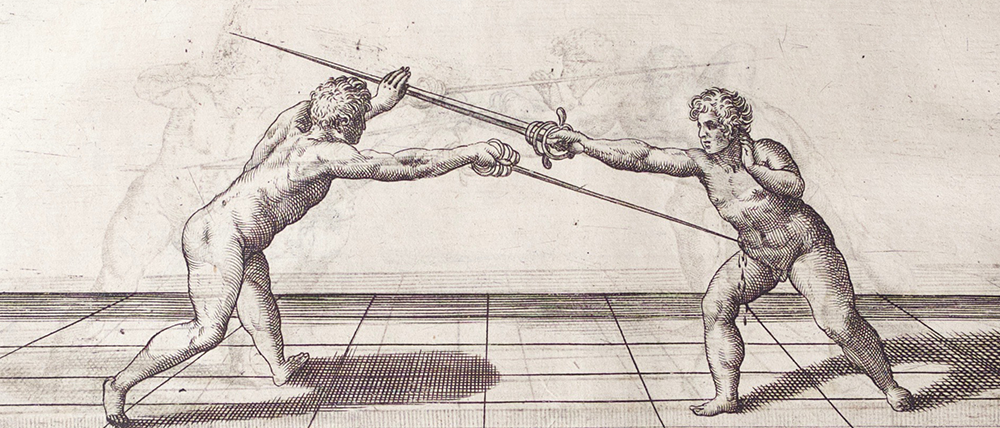
We can also get the off-hand involved to keep our sword free.
- Feint on the outside line
- Your opponent will move to attack into the feint
- Pick up their sword with your off-hand, parrying it and carrying it further to your left (if you’re a righty). Meanwhile, perform a cavazione to free your sword, striking in quarta with your sword-tip low.
Class Video
Here’s a recording of the class. It’s more or less what’s written out in this blog post, plus a strength/conditioning routine in the second half of the class.
DONATIONS: Classes are 100% free, however, if you find these sessions useful, please consider a small donation so I can continue to produce rapier & other historical martial arts content. Donate at https://www.paypal.me/thetavernknight



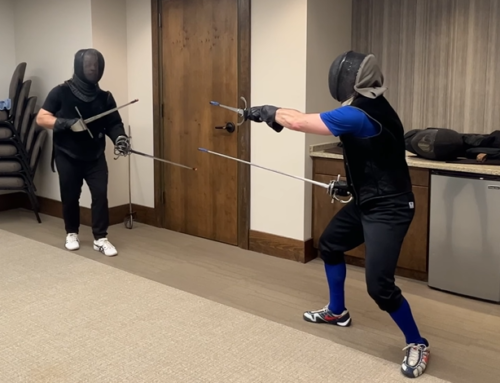
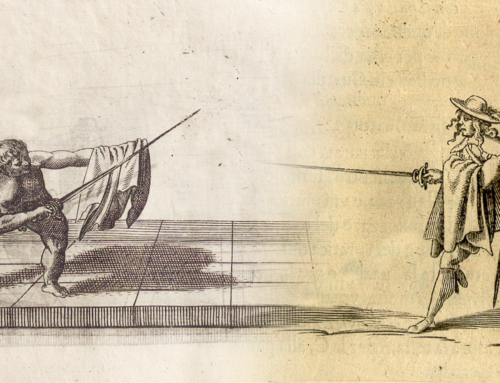

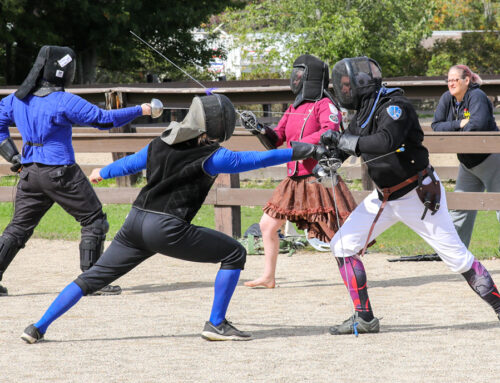
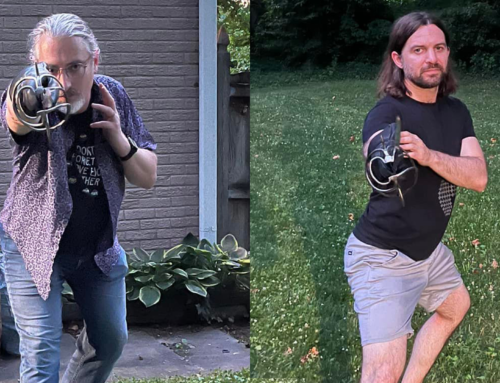
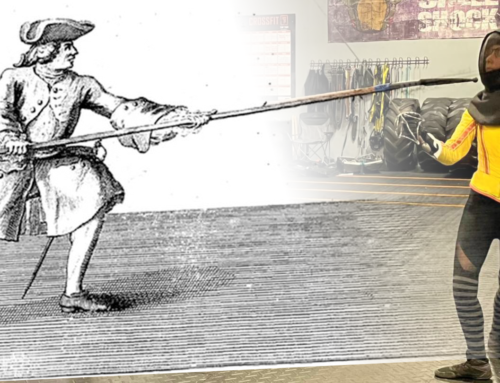
Leave A Comment